San Quentin

Brief Synopsis
Cast & Crew
Lloyd Bacon
Pat O'brien
Humphrey Bogart
Ann Sheridan
Barton Maclane
Joseph Sawyer
Film Details
Technical Specs

Synopsis
In the wake of riots at San Quentin Prison, in which convicts protest harsh punishments meted out by captain of the yard Druggin, Army trainer Stephen Jameson is appointed to take over the job. Steve is eager to implement his ideas for prison reform. While celebrating with a couple of his army pals the night before he starts his new job, Steve meets captivating nightclub singer May Kennedy who is singing under the stage name Mae De Villiers. As they get acquainted, her kid brother, Joe "Red" Kennedy, a petty crook, bursts into the room, followed by the police, who arrest him for robbing a bank. Because the robbery is not his first offense, Joe is sentenced to San Quentin, where he quickly falls in with the wrong crowd. When May visits Joe in prison, she discovers that Steve is responsible for implementing what she interprets as harsh treatment of her brother, and breaks off their relationship. Despite opposition from the parole board, Steve continues his efforts to improve conditions at San Quentin. Slowly, Joe realizes the fair principles behind Steve's regulations. As a result, he refuses to join his friend, Sailor Boy Hansen, in an escape attempt. However, when Sailor suggests that Steve has given Joe special treatment only to ingratiate himself with May, Joe becomes furious and agrees to make the break. During their escape, Sailor is killed, while Joe heads for May's house. Steve is there waiting and convinces Joe that he was duped by Sailor. When the police arrive, Joe escapes out the back, intending to return to prison. Unfortunately, just outside the prison, he is shot and killed by prison guards.

Director

Lloyd Bacon
Cast
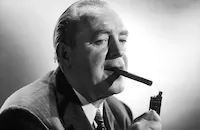
Pat O'brien

Humphrey Bogart
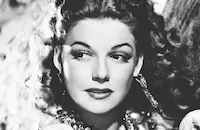
Ann Sheridan
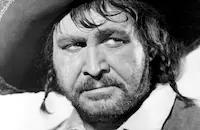
Barton Maclane
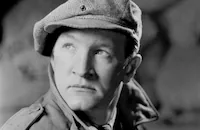
Joseph Sawyer

Veda Ann Borg
James Robbins
Joseph King

Gordon Oliver
Garry Owen
Marc Lawrence

Emmett Vogan
William Pawley
Al Hill
Max Wagner
George Lloyd
Ernie Adams
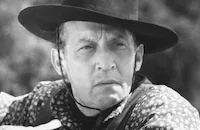
Raymond Hatton
Hal Neiman
William A. Williams
Glen Cavender
George Offerman Jr.
Bruce Mitchell
Lane Chandler
Eddy Chandler

Paul Panzer
Doc Stone
Herman Marks

Eddie Gribbon
Max Hoffman Jr.
Harry Hollingsworth
Dick Wessel

Edward Keane

Lee Phelps
Pat Flaherty
Joe Cunningham
Gennaro Curci
Edward Peil Sr.
Crew
Charles Belden
Sam Bischoff
John Bright
Humphrey Cobb
Laird Doyle
Al Dubin
Leo F. Forbstein
Tony Gaudio
Esdras Hartley
Sid Hickox
William Holmes
William Kellette
Jean Kenbrovin
H. F. Koenekamp
L. P. "dudie" L. P. "dudie" Mashmeyer
S. C. Manatt
Dick Mayberry
Seton I. Miller
Peter Milne
Tom Reed
Howard Shoup
Robert Tasker
Jack L. Warner
Harry Warren

Photo Collections
Videos
Movie Clip



Trailer
Film Details
Technical Specs

Articles
San Quentin (1937)
By the end of the thirties, with the Depression finally starting to wind down, focus turned to the now over populated penal institutions, crammed with victims of the breadline, who, having turned to lawlessness to survive, often found themselves sharing their quarters with the less notable members of Murder, Inc. This "odd coupling" of social injustice compounded by horrific tales of guard brutality, made great headline copy - always a staple for Warners source material.
In 1937 alone the studio had three prison pictures in release: Alcatraz Island, Blackwell's Island and, most prominently, San Quentin. True, a few skeptic scribes questioned the coincidence factor of the plot - honest prison yard chief O'Brien is faced with the dilemma of having the rebellious brother (Humphrey Bogart) of his girl friend (Ann Sheridan) confined to his institution - but with its fast-paced Lloyd Bacon direction, crackling dialogue and rogue's gallery supporting cast (Barton MacLane, Joe Sawyer, Marc Lawrence, Frank Faylen), there wasn't a squealer in the house.
Director: Lloyd Bacon
Producer: Sam Bischoff (uncredited), Hal B. Wallis (uncredited)
Screenplay: Peter Milne, Humphrey Cobb (from a story by John Bright and Robert Tasker)
Cinematography: Sidney Hickox
Editor: William Holmes
Art Direction: Esdras Hartley
Cast: Pat O'Brien (Captain Steve Jameson), Humphrey Bogart (Joe 'Red' Kennedy), Ann Sheridan (May Kennedy), Barton MacLane (Lt. Druggin), Joe Sawyer (Carl 'Sailor Boy' Hanson).
BW-71m. Closed captioning.
by Mel Neuhaus

San Quentin (1937)
Marc Lawrence (1910-2005)
Born Max Goldsmith on February 17, 1910, in the Bronx, Lawrence had his heart set on a career in drama right out of high school. He enrolled at City College of New York to study theatre, and in 1930, he worked under famed stage actress Eva Le Gallienne. Anxious for a career in movies, Lawrence moved to Hollywood in 1932 and found work immediately as a contract player with Warner Bros. (an ideal studio for the actor since they specialized in crime dramas). He was cast as a heavy in his first film, If I Had a Million (1932). Although his first few parts were uncredited, Lawrence's roles grew more prominent: a sinister henchman in the Paul Muni vehicle in Dr. Socrates (1935); a conniving convict aiding Pat O'Brien in San Quentin (1937); a menacing thug stalking Dorothy Lamour in Johnny Apollo (1940); the shrewdly observant chauffeur in Alan Ladd's breakthrough hit This Gun For Hire (1942); and one of his most memorable roles as Ziggy, a fedora wearing mobster in the Bogart-Bacall noir classic Key Largo (1948).
Lawrence, when given the opportunity, could play against type: as the prosecuting attorney challenging Tyrone Power in Brigham Young (1940); a noble aristocrat in the Greer Garson-Walter Pidgeon period opus Blossoms in the Dust; and most impressively, as a deaf mute simpleton in the rustic drama The Shepherd of the Hills (both 1941). Better still was Lawrence's skill at comedy, where his deadpan toughness worked terrifically as a straight man against the likes of Joe E. Brown in Beware Spooks (1939); Abbott and Costello in Hit the Ice (1943); Penny Singleton in Life with Blondie (1945); and Bob Hope in My Favorite Spy (1951).
After that, Lawrence's career took a turn downward spin when he was labeled a communist sympathizer during the Hollywood witch hunts of the early '50s. He was exiled in Europe for a spell (1951-59), and when he came back, the film industry turned a blind eye to him, but television overcompensated for that. Here he played effective villains (what else?) in a series of crime caper programs: Peter Gunn, Johnny Staccato, The Untouchables, Richard Diamond, Private Detective; and eventually made a welcome return to the big screen as a returning exiled gangster in William Asher's underrated mob thriller Johnny Cool (1963).
It wasn't long before Lawrence found himself back in the fray playing in some big box-office hits over the next two decades: Diamonds Are Forever (1971), The Man with the Golden Gun (1974), Marathon Man (1976), Foul Play (1978); and The Big Easy (1987). Sure he was cast as a gangster, but nobody could play a rough and tumble mob boss with more style or conviction.
Interestingly, one of his finest performances in recent years was in television, as a severely ill old man unwilling to accept his fate in a fourth season episode of ER (1997-98). His last screen role was just two years ago, as a nimble minded VP in Looney Tunes: Back in Action (2003).
In 1991, Lawrence published a memoir about his venerable career, Long Time No See: Confessions of a Hollywood Gangster that received much critical acclaim. He has also developed a cult following due to his appearances in such offbeat items as From Dusk to Dawn and Pigs aka Daddy's Deadly Darling, the 1972 horror film he directed and starred in with his daughter Toni. He is survived by his wife, Alicia; two children from a previous marriage, Toni and Michael; and a stepdaughter Marina.
by Michael T. Toole
Marc Lawrence (1910-2005)
Quotes
Trivia
Notes
According to information on the Warner Bros. Collection at the USC Cinema-Television Library and Archive for the Performing Arts, the first title of the story on which the film was based was Captain of the Yard. Warner Bros. files also reveal that director Lloyd Bacon and a crew shot extensive exterior footage at San Quentin Penitentiary. Within the film, actual footage of San Quentin, which was all in long shot, was blended with scenes shot in recreated sets on the Warner Bros. lot. Studio memos in the Warner Bros. Collection reveal that the studio added an extra sentence to the written onscreen disclaimer indicating that "No portrayal or scene in which recognition of an individual is possible was made of any actual prison inmate or any penal institution."
Additional location shooting was done in Simi Valley, Bronson Canyon, the Providentia Ranch and the Warner Ranch in Calabasas, according to studio production records. Studio cost sheets state that the film had a negative cost of $223,489. Hollywood Reporter noted that Warner Bros. had to reshoot some scenes after the death of Tom Manning. Manning, playing a small character part, died of a heart attack on the set. Warner Bros. studio memos reveal that, following a viewing of the completed film, studio head Jack Warner suggested that the film's ending was too abrupt and suggested an additional scene in which "Capt. Stephen Jameson" is having breakfast with "May Kennedy" when he receives a phone call from the warden telling him that "Joe 'Red' Kennedy" has died.
Additional information in the Warner Bros. collection reveals that director Michael Curtiz shot the additional scenes in January 1937 but the scenes were later reshot by Bacon in Mar, after star Pat O'Brien's return to the studio following a six-week vacation. A studio memo from Associate producer Sam Bischoff to Producer Hal B. Wallis complained that the sequence, as shot by Curtiz, was not a sufficiently serious ending to the tragic situation that had transpired. The released film retained the original ending, Red's death at the gate to San Quentin. It is possible that the running time of 70 minutes, which was mentioned in some reviews, was based on the temporarily added footage.

Miscellaneous Notes
Released in United States 1937
Released in United States 1937














